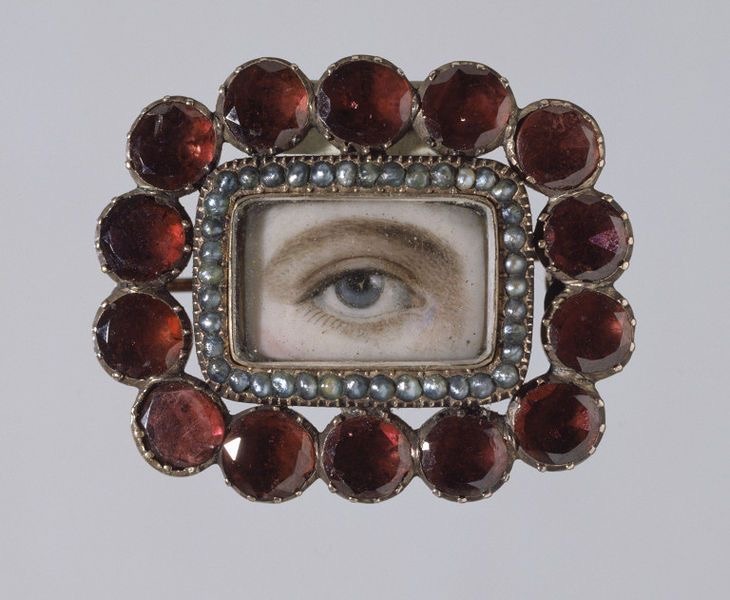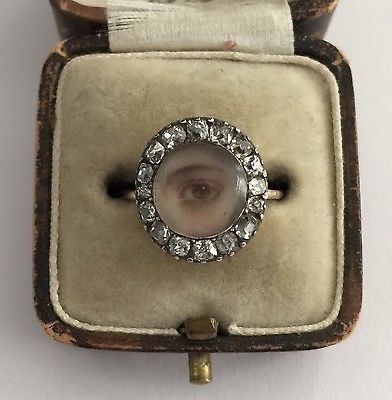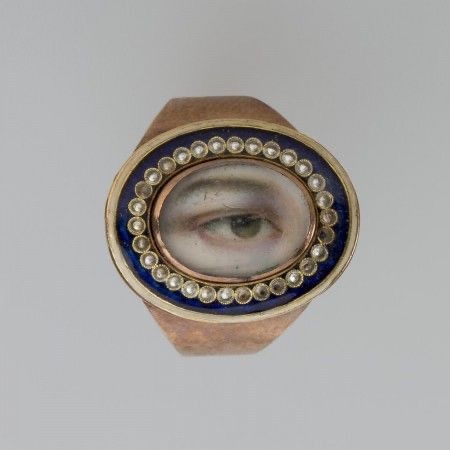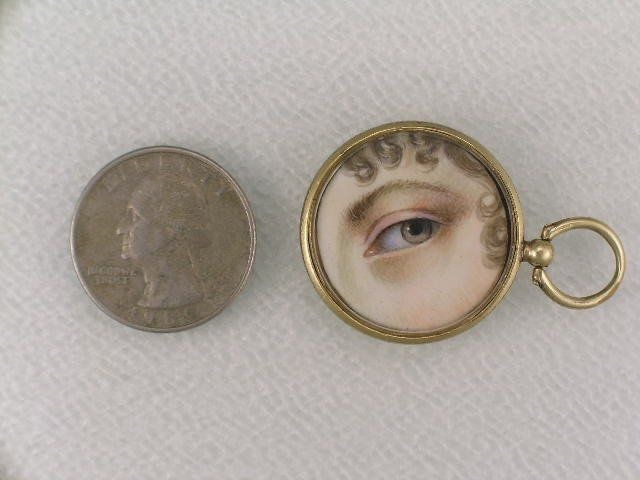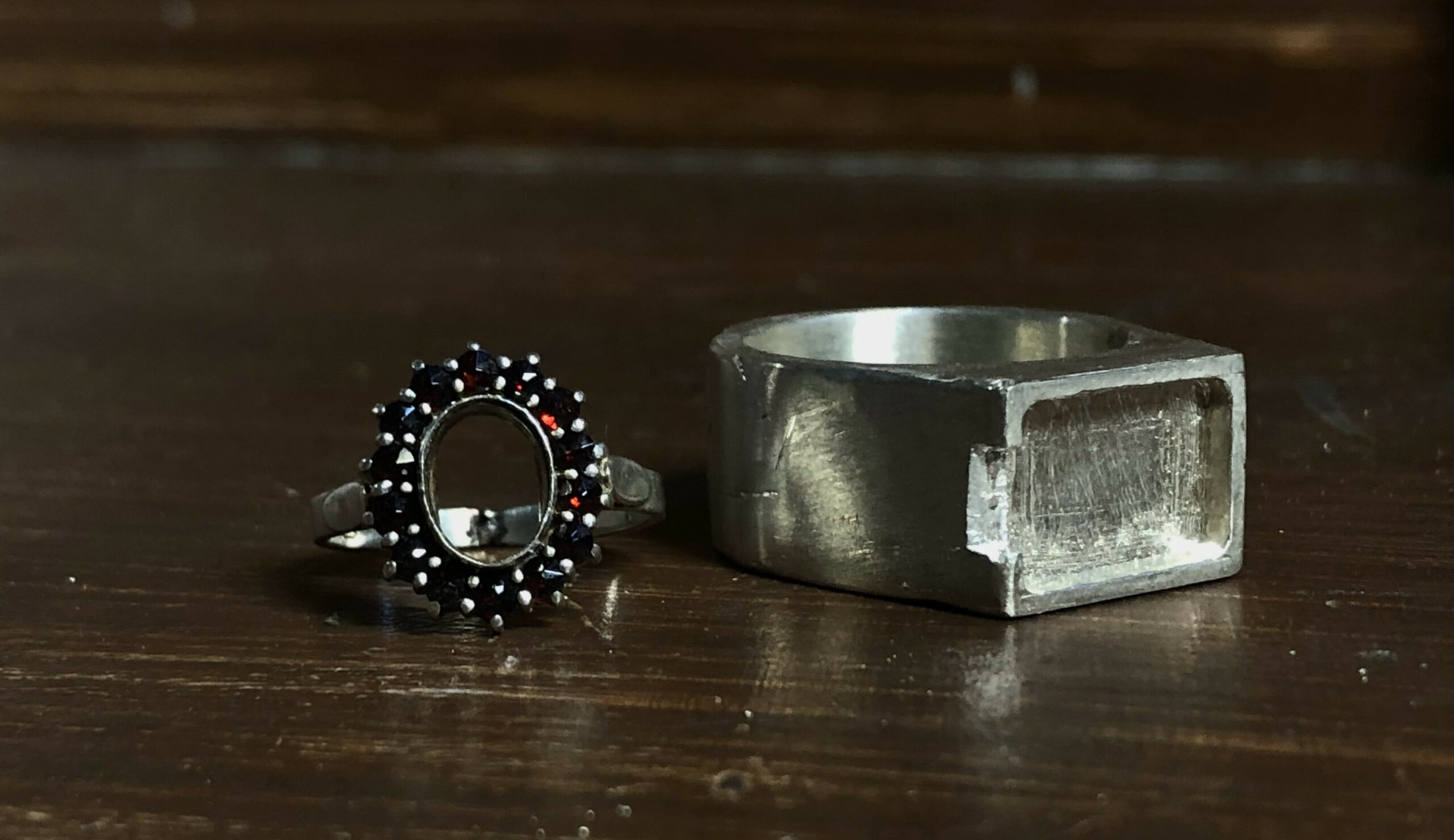Jewelry "Lover's eyes"
The pieces are shrouded
in mystery: the
customer, the lover,
and the artist
are unknown
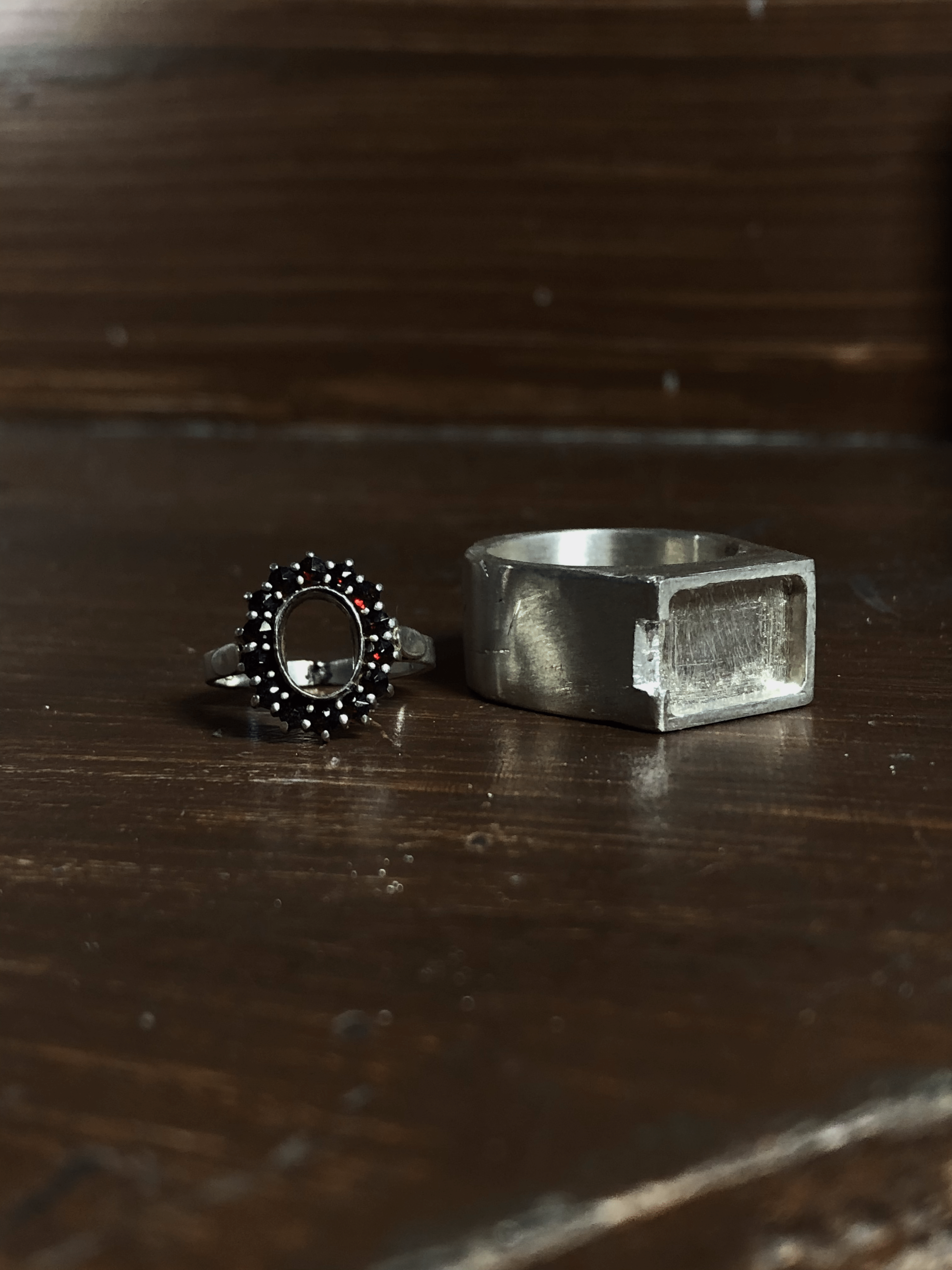
Lover’s eyes are unusual jewellery in the form of pictorial miniatures depicting eyes exchanged between Victorian lovers of the 18th century. Originally called “eye miniatures”, the term “Lover’s eyes” was introduced later by American antiques collector Edythe Weber.
Most such jewellery was commissioned as a gift – to express devotion, love and to give the lover a piece of themselves. Such jewellery was considered a very intimate and valuable gift and could only be afforded by members of the aristocracy. Since the miniature depicts only one eye, the identity of the beloved cannot be identified, and it will be kept secret from prying eyes.
It is believed that the fashion for eye miniatures was introduced by the Prince of Wales, who later became King George IV.
In the 1780s, the prince was passionately in love with the twice widowed Catholic Maria Fitzherbert and commissioned Richard Cosway to make a pearl-encrusted miniature of his right eye for his beloved.

Jewelry workshop
Their affair was forbidden: royal laws prevented the likes of Mary from becoming monarchs. Fearing public censure, she even went abroad, but later still accepted his proposal: the marriage was consummated in December 1785, although it was never officially recognised.
Later, another portrait was commissioned, this time with the image of Mary’s eye. According to reports, that the prince always carried it with him and kept it for the rest of his life.
As a rule, such miniatures were made with water colours on paper or ivory and their size did not exceed 5-7 cm.
They were varied: rings, brooches, medallions framed with precious metals, rubies, garnets, and other precious stones. There were sadder versions of such jewellery. For example, a eye in a pearl setting, from which two diamond tears stand out, was created in memory of a deceased loved one. Thanks to such a product, the look of the beloved remained immortal.

In the process of making
Why exactly the eyes? The whole point is that it is through the eyes that a large proportion of feelings are expressed. Including falling in love. Looking at the eye of the beloved, a person felt a connection with him, a dialogue.
Eyes and gaze had a special place in the culture of British society in the late 18th century, and this plays a key role in unravelling the mystery of the eye miniatures. As British social norms at the time did not allow public communication between a man and a woman, it was easier to exchange glances than words, even a quick glance could convey lust, amorousness or devotion to one’s lover. However, the fashion for such jewellery began to wane by 1830, when photography appeared. It offered a “real portrait”, and so interest in miniature portraiture dried up rather quickly. Since then, such jewellery has ceased to be made. The love stories, their heroes and the names of the artists have been largely forgotten.

In the process of making
To date, very few of these portraits have survived, less than a thousand copies. So at the moment it is a relatively expensive collector’s item. Such items express the very essence of portrait painting: the act of looking at you, the ability of the painting to hold the attention of its viewer.
The pieces are shrouded in mystery: the customer, the lover, and the artist are unknown. Some of the miniatures can now be seen at the Cleveland Museum of Art, the Philadelphia Museum of Art, and London’s Victoria and Albert Museum.
I am very inspired by objects that carry a secret meaning or a reflection of an era, so I decided to create my own interpretation of “Lover’s eyes” for myself and my husband: a pair of rings with eye miniatures as a gift for our wedding anniversary.

Men's ring.
Materials: Silver 925/ Blackening/ Paper/ Water colours/ Jewellery resin.
Ring and miniature: IRÈNE SVIT
His ring I made to my own design in sterling silver using blackening. You can open the ring and see the miniature. The miniature is done in water colours on paper and sealed with jewellery resin. The size of the miniature is 1.3 x 0.8 cm.

Woman's ring.
Materials: Silver 925/ Natural Czech garnet/ Paper/ Water colours / Jewellery resin.
Miniature: IRÈNE SVIT
For my ring, I used a vintage sterling silver ring with Czech garnets, which is already over a century old. Interestingly, Czech garnets used to be called Czech diamonds because of the special cut of the stones, which is now lost and is not used in jewellery. The miniature portrait of the eye on my ring, is made in the same technique: water colours on paper sealed with jewellery resin. The size of the miniature is 0.8 x 0.6 cm.
Now I also have such a unique collector’s item, which carries my history.
Lover's eyes are unusual jewellery in the form of pictorial miniatures depicting eyes exchanged between Victorian lovers of the 18th century. Originally called "eye miniatures", the term "Lover's eyes" was introduced later by American antiques collector Edythe Weber.
BLOG
Most such jewellery was commissioned as a gift – to express devotion, love and to give the lover a piece of themselves. Such jewellery was considered a very intimate and valuable gift and could only be afforded by members of the aristocracy. Since the miniature depicts only one eye, the identity of the beloved cannot be identified, and it will be kept secret from prying eyes.
It is believed that the fashion for eye miniatures was introduced by the Prince of Wales, who later became King George IV.
In the 1780s, the prince was passionately in love with the twice widowed Catholic Maria Fitzherbert and commissioned Richard Cosway to make a pearl-encrusted miniature of his right eye for his beloved.
Their affair was forbidden: royal laws prevented the likes of Mary from becoming monarchs. Fearing public censure, she even went abroad, but later still accepted his proposal: the marriage was consummated in December 1785, although it was never officially recognised.
Later, another portrait was commissioned, this time with the image of Mary’s eye. According to reports, that the prince always carried it with him and kept it for the rest of his life.
As a rule, such miniatures were made with water colours on paper or ivory and their size did not exceed 5-7 cm.
They were varied: rings, brooches, medallions framed with precious metals, rubies, garnets, and other precious stones. There were sadder versions of such jewellery. For example, a eye in a pearl setting, from which two diamond tears stand out, was created in memory of a deceased loved one. Thanks to such a product, the look of the beloved remained immortal.
Why exactly the eyes? The whole point is that it is through the eyes that a large proportion of feelings are expressed. Including falling in love. Looking at the eye of the beloved, a person felt a connection with him, a dialogue.
Eyes and gaze had a special place in the culture of British society in the late 18th century, and this plays a key role in unravelling the mystery of the eye miniatures. As British social norms at the time did not allow public communication between a man and a woman, it was easier to exchange glances than words, even a quick glance could convey lust, amorousness or devotion to one’s lover. However, the fashion for such jewellery began to wane by 1830, when photography appeared. It offered a “real portrait”, and so interest in miniature portraiture dried up rather quickly. Since then, such jewellery has ceased to be made. The love stories, their heroes and the names of the artists have been largely forgotten.

"Lover’s eyes" rings by IRÈNE SVIT 2021
To date, very few of these portraits have survived, less than a thousand copies. So at the moment it is a relatively expensive collector’s item. Such items express the very essence of portrait painting: the act of looking at you, the ability of the painting to hold the attention of its viewer.
The pieces are shrouded in mystery: the customer, the lover, and the artist are unknown. Some of the miniatures can now be seen at the Cleveland Museum of Art, the Philadelphia Museum of Art, and London’s Victoria and Albert Museum.
I am very inspired by objects that carry a secret meaning or a reflection of an era, so I decided to create my own interpretation of “Lover’s eyes” for myself and my husband: a pair of rings with eye miniatures as a gift for our wedding anniversary.
His ring I made to my own design in sterling silver using blackening. You can open the ring and see the miniature. The miniature is done in water colours on paper and sealed with jewellery resin. The size of the miniature is 1.3 x 0.8 cm.
For my ring, I used a vintage sterling silver ring with Czech garnets, which is already over a century old. Interestingly, Czech garnets used to be called Czech diamonds because of the special cut of the stones, which is now lost and is not used in jewellery. The miniature portrait of the eye on my ring, is made in the same technique: water colours on paper sealed with jewellery resin. The size of the miniature is 0.8 x 0.6 cm.
Now I also have such a unique collector’s item, which carries my history.
